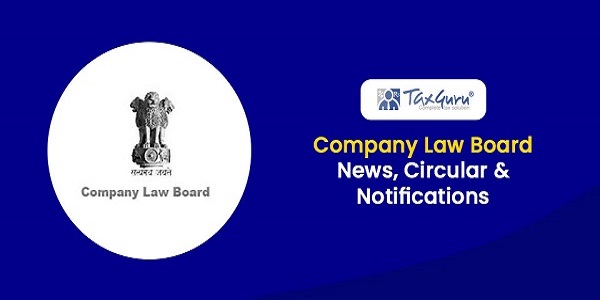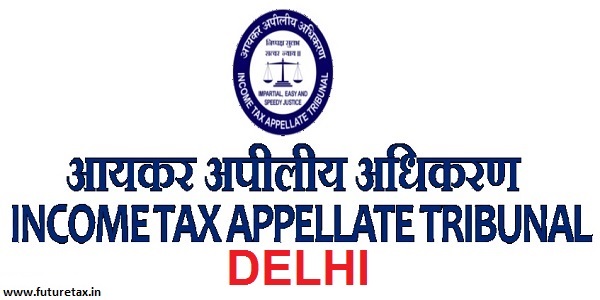
NFRA Series on Audit Quality: ECL and Auditor-Audit Committee in Tamil
- Tamil Tax upate News
- January 15, 2025
- No Comment
- 61
- 18 minutes read
National Financial Reporting Authority (NFRA) emphasizes improving communication between statutory auditors and audit committees, especially regarding accounting estimates and judgments. In line with its mandate under the Companies Act, 2013, and relevant auditing standards (SA 260(R), SA 265, and SA 540), NFRA has launched the Auditor-Audit Committee Interactions Series. The first in this series focuses on auditing Expected Credit Losses (ECL) for financial assets under Ind AS 109. The ECL approach requires proactive recognition of credit risk, incorporating historical data, current conditions, and future economic forecasts. NFRA encourages auditors and audit committees to collaborate effectively, ensuring compliance with Ind AS 109 and other regulations. Audit committees are tasked with reviewing key judgments, internal controls, and credit risk management, while auditors are expected to exercise professional skepticism, utilize expert judgment, and verify data accuracy. This interaction aims to safeguard audit quality, financial integrity, and investor confidence.
National Financial Reporting Authority
Introduction
In course of NFRA’s enforcement, review and monitoring activities, auditor’s communication with Those Charged With Governance (TCWG) (including the Audit Committees) has been variously highlighted. A need has been felt through these activities towards reinforcing the ways and means of communication between the Statutory Auditors and the Audit Committees in particular drawing upon the requirements in the Companies Act 2013 (CA 2013), the two relevant Standards on Auditing (SA 260 (R) and 265), other related SAs and the Standard on Quality Control (SQC).
Therefore, in accordance with NFRA’s obligations to suggest measures for improvement in overall audit quality and to promote awareness and significance of accounting and auditing standards, auditor’s responsibilities, audit quality, and keeping in view NFRA’s objectives of protecting public interest and investor protection, NFRA is commencing with this series of Auditor-Audit Committee Interactions, which will be issued on significant areas of accounting and auditing, from time to time.
This Auditor-Audit Committee Interactions Series 1 draws the attention of the auditors to the potential questions the Audit Committees/Board of Directors may ask them in respect of accounting estimates and judgments. Within that, this communication being the first in this series, includes aspects pertaining to audit of Expected Credit Losses (ECL) for financial assets and other items as required by Ind AS 109, Financial Instruments.
Commonality of Goals-Auditors and Audit Committees
Auditors and Audit Committees work towards the common goals of ensuring audit quality and integrity of financial statements.
Section177 of CA 2013 requires the Audit Committee to review the financial statements and auditors report thereon; review and monitor the effectiveness of the audit process; valuation of undertakings or assets of the company; and evaluation of internal financial controls and risk management system.
Companies Act 2013 (CA 2013) and SEBI (LODR) requirements relating to Audit Committee/Board of Directors on review of accounting estimates and judgments As per Section134 (5) of CA 2013, the Board of Directors (BOD) are required to state in the Directors’ Responsibility Statement in the Board’s Report, which is part of Annual Report, that they had selected such accounting policies and applied them consistently and made judgements and estimates that are reasonable and prudent to give a true and fair view of the state of the affairs of the company.
SEBI LODR specifically mandates the Audit Committee to review major accounting entries involving estimates based on the exercise of judgment by management.
Accounting Estimates and Judgments
Preparation and Presentation (including Disclosures) of financial statements requires the Management to make estimates and judgements in the recognition/measurement of assets, liabilities, income and expenses. Such areas could be impairment of non-financial assets, Expected Credit Loss (ECL) for financial assets, provisions for liabilities, recognition/measurement of deferred tax assets and so on. Some of these could be complex requiring special attention by the Preparers, Audit Committees and the Auditors.
Ind AS 109 prescribes recognition and measurement of ECL whereas related disclosure requirements and overall credit risk related disclosures are addressed by Ind AS 107, Financial Instruments: Disclosures.
ECL recognition and measurement is a complex area of accounting estimate that involves significant management judgment and involvement of relevant subject matter experts.
What is the ECL approach?
Impairment loss recognition and measurement for certain financial assets and other items within the scope of Ind AS 109 is based on the concept called Expected Credit Loss (ECL). Unlike in the concept of ‘Incurred Loss’, the credit risk and resultant loss is identified and recognized promptly and on timely basis in the ECL approach.
Under the ECL approach, impairment loss recognition begins from the moment that a financial asset is accounted for, and not at a later stage based on indications/objective evidence of occurrences of losses, which is the case under the Incurred Loss approach. This ECL approach of Ind AS 109 is based on the international standard IFRS 9 which was introduced to remedy the weaknesses observed during the global financial crisis (2007-08).
ECL applies to all types of financial assets such as Loans/Advances, Investments including less-complex items like Trade Receivables, Lease Rental Receivables, Unbilled Revenue (Contract Assets (Work in Progress)), Security Deposits and bank balances. Also, loan commitments and financial guarantee contracts are subject to these ECL requirements. It is important to appreciate this segmentation and applicable tests in respect of various classes of financial assets.
ECL computation is based on unbiased probability weighted outcomes and range of scenarios, but not on ‘best or worst’ case scenarios.
ECL computations are required to reflect time value of money i.e., credit loss is measured based on present value of future cash flows. Additionally, ECL has to take into account future forecast economic conditions and is not just based on historical credit loss experience.
In case of financial institutions such as Non-Banking Finance Companies (NBFCs) in India, ECL being an accounting estimate involving significant expert judgment often requires the use of subject matter experts or professionals. These could be either in-house experts of auditors or management experts1&2 used by the entity preparing the financial statements.
What are some of the potential questions that the Auditors may expect from the Audit Committees in respect of ECL under Ind AS 109? (Illustrative)
- Has the auditor considered the changes and trends thereof, in the opening and closing balances, and reversals and charges to P&L on account of ECL? Auditors may need to highlight any unusual movements to the Audit Committee.
- Has the auditor verified the appropriateness of ECL recognition and measurement approach adopted by the management for different classes of financial assets (as given above)? Has the auditor classified these different classes of financial assets and applied tests specific to each class?
- g. whether the application of ‘Simplified Approach (Provision Matrix based on Past Due bucket’) for Trade receivables, Lease receivables is acceptable?
- Are there any Trade or Lease receivables that contain significant financing component which do not qualify for the simplified approach?
♦ In case the company has material amount of loans and advances or investments, has the auditor applied adequate procedures to verify the existence of robust internal control systems including credit risk management system so that management estimates of ECL and related judgments are based on concepts and reliable data that meets the requirements of Ind AS 109?
- Are there any indicators of increase in credit risk (write-off of bad debts, incidence of substantial trade receivables under dispute, significant percentage of unsecured amounts under litigation, high percentage of receivables at risk etc.) that the auditors wish to highlight?
- Has the auditor evaluated the management assessment of credit risk or is there complete reliance on management judgment?
♦ Has the auditor observed any unusual features in the loans, advances or receivables granted by the company which may need to be considered while evaluating the appropriateness of ECL?
♦ Has the auditor observed any loans, advances or receivables from the Related Parties (including Promoters or Promoters related entities)? If yes,
- Has the auditor verified the business rationale of such transactions or creditworthiness of such entities?
- Are there any changes in business terms that had or could have a significant impact on such ECL provisioning?
- How has the auditor verified the accuracy of those balances? Has the auditor checked the genuineness of the receipt of funds as repayment of these receivables to detect any management bias to falsely report lower balances of loans and receivables, which could result in under recording of ECL?
- Has the auditor assessed the recoverability of such outstanding balances and the adequacy of ECL (impairment loss) allowance for these balances?
- Has the auditor considered the appropriateness of the stratification or disaggregation/aggregation of the data for determining ECL? For instance, same ECL technique may not necessarily be applied to a class of assets. The underlying asset class may need to be further stratified according to industry, the geographic location (for overseas debtors especially), number of years in business stage in the business life cycle, nature of goods and services provided etc.) before ECL is recognized and measured.
- If recoverability is based on management expert’s valuation reports or certificates has the auditor verified the professional competence, objectivity and independence of that expert, and also the data used by the expert to form his opinion3? Has the auditor any such concerns on the management expert (including the one appointed by the audit committee u/s 177 of CA 2013)?
♦ If loans, advances or receivables to/from Promoters or Promoters related entities originate in the books of subsidiaries or associates, has the Principal Auditor, towards providing assurance, evaluated the sufficiency and adequacy of the work done by the auditor of subsidiaries and the procedures followed by such other auditor?
♦ In case the company follows (or is expected to follow, say NBFC or Bank) the ‘3 Three Stage’ classification approach, how did the auditor test the design and operating effectiveness of control mechanism over recognition and measurement of ECL allowance for significant class of financial assets viz. customer loans, investments?
♦ Does the entity’s approach for ECL recognition and measurement meet the fundamental principles of the Ind AS 109 i.e., unbiased probability-weighted outcome, time value money, supportable information/data based on historical events, current conditions as well as forecast of future economic conditions? Has the auditor ensured that the category of the financial instruments excluded from the applicability of ECL are as per Ind AS 109?
♦ Has the auditor checked whether the entity has adequate subject matter experts such as credit risk experts/recovery specialists, data and IT systems commensurate with the complexity of the credit risk profile of its financial assets and other items subject to ECL requirements?
♦ Has the auditor considered the guidance notes of relevant regulators or standard-setters4 or relevant prudential regulators e.g. Reserve Bank of India5 in this area?
♦ Has the auditor considered the impact of Regulatory developments and policy directions?
Basel Committee on Banking Supervision’s (BCBS) Guidance Note
The Auditors, Audit Committees/Board of Directors of financial institutions like NBFCs or Companies that have adopted sophisticated ECL models6 may find it very useful and relevant to refer to the guidance published by the Basel Committee on Banking Supervision’s (BCBS) Guidance Note7 to External Auditors and Audit Committees of Banks.
This publication of the BCBS (link in footnote below) lays down the ten expectations of the supervisors from the external auditor of banks and provides potential questions the Audit Committee may ask the Auditors.
These expectations and questions are systematically structured into Five key themes around Audit Quality and Five key components of ECL.
Key themes of Audit Quality are:
1) Professional skepticism and management bias
2) Assessment of risks of material misstatement
3) Internal Control
4) Use of Experts
5) Audit Evidence
Key components of ECL are:
1) Forecasts and forward-looking information
2) Macroeconomic scenarios and weighting
3) Models
4) Significant increase in credit risk criteria
5) Disclosure
Key Standards on Auditing (SAs) that are relevant to accounting estimates and judgments
There are several areas that involve accounting estimates and management judgements8. Following key SAs would be of interest to Auditors and Audit Committees.
SA 5409 which lays down audit requirements of risk assessment procedures and guidance on nature of accounting estimates, indicators of possible management bias and audit work paper documentation. This SA expands on how requirements of SA 31510 and SA 33011 have to be applied in the audit of accounting estimates.
SA 70112 deals with the auditor’s responsibility to communicate key audit matters (KAM) in the auditor’s report. One of the three items included as a KAM in this standard relates to areas that involved significant management judgement, including accounting estimates that have been identified as having high estimation uncertainty. The auditor is required to report the reason and rationale for considering it as a KAM and how the matter was addressed during the course of the audit.
SA 260 (Revised)13 requires the auditor to communicate with those charged with governance about the qualitative aspects of the accounting practices, policies and disclosures. The reason behind such a communication is that the views of the auditor would be particularly relevant to TCWG to discharge their responsibilities for oversight of the financial reporting process.
Acknowledgment: NFRA appreciates the guidance and support provided by eminent subject matter experts Shri D Sundaram, Shri Nawshir Mirza, Shri P R Ramesh and Shri R. Anand, in developing this publication.
Disclaimer: This publication by NFRA Staff is intended purely towards promotion of awareness of auditing and accounting standards and audit quality as part of NFRA’s education, training, seminar and advocacy initiatives. NFRA and the subject matter experts do not accept any responsibility or liability for any loss caused to any person or any entity, howsoever arising from the use of or refraining from the use of the contents of this document. This document is not a policy/standard/recommendation/statement of Executive Body of NFRA, the Authority or the Government and is not issued as a substitute for any obligations of Auditors, Management, TCWG including Audit Committees, as are provided in law, rules, and regulations.
Notes:-
1 Para 5(d) of Standard on Auditing (SA) 500, Audit Evidence
2 Para 8 of SA 500 requires the auditor to evaluate competence, capability and objectivity of that expert; obtain an understanding of the expert’s work; and evaluate the appropriateness of the expert’s work as audit evidence.
3 Para 8 of Standard of Auditing (SA) 500, Audit Evidence
4 ISA 540 (Revised) Implementation –Expected Credit Losses Illustrative Examples August 2020
5 Refer para 9 and Annex XXVI of RBI Master Direction – Non-Banking Financial Company – Systemically Important Non-Deposit taking Company and Deposit taking Company (Reserve Bank) Directions, 2016
6 ECL Models using Advanced Credit Risk Management parameters such as Probability of Default (PD), Loss Given Default (LGD) and Exposure at Default (EAD)
7 ‘Supplemental note to External audits of banks – audit of expected credit loss’ Basel Committee on Banking Supervision Guidance of December 2020 (https://www.bis.org/bcbs/publ/d513.pdf)
8 Also refer para A6 and A7 of Standard on Auditing (SA) 540, Auditing Accounting Estimates, Including Fair Value Accounting Estimates, and Related Disclosures
9 Standard on Auditing (SA) 540, Auditing Accounting Estimates, Including Fair Value Accounting Estimates, and Related Disclosures
10 Standard on Auditing (SA) 315, Identifying and Assessing Risk of Material Misstatement Through Understanding the Entity and its Environment
11 Standard on Auditing (SA) 330, The Auditors’ Responses to Assessed Risks
12 Standard on Auditing (SA) 701, Communicating Key Audit Matters in the Independent Auditor’s Report
13 Standard on Auditing (SA) 260 (Revised), Communication with Those Charged with Governance




